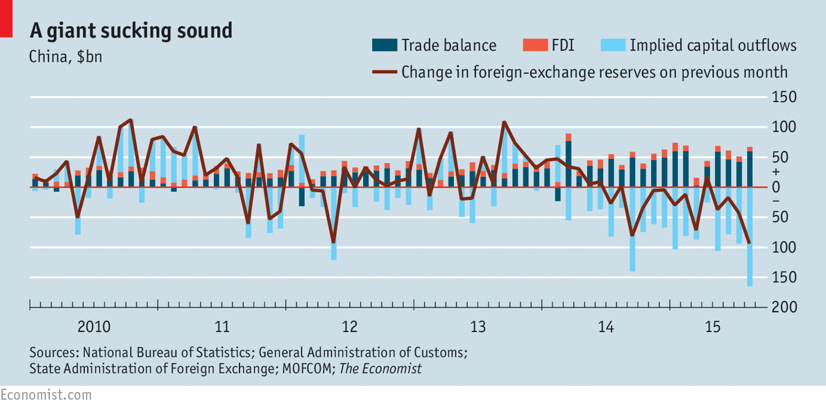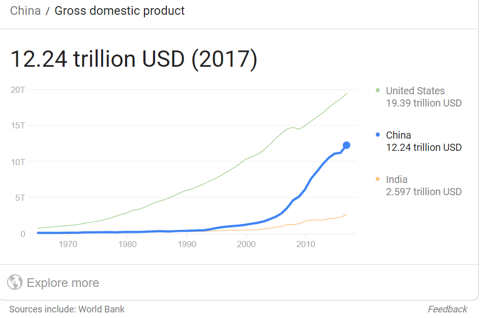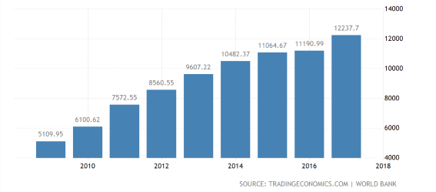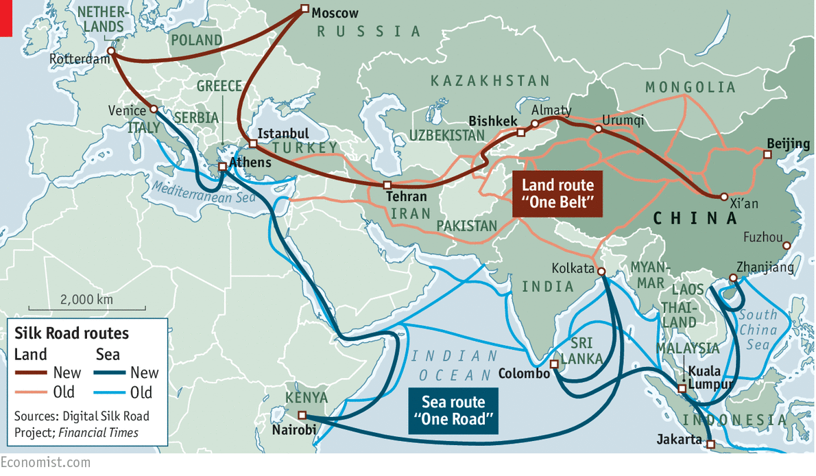
1.INTRODUCTION:
★This article provides broad perspectives on the Economics of people’s republic of china, it covers past, present, and future goals. This introduction does not summarize the entire macro-economics and China’s reformation. Rather, in what follows we provide our own perspective and ideological view on the Economics of China from the past, present, and future goals of the party. In the late 1970s, China had an average annual growth rate of around 10% for over three decades in a row. China’s economy set an outstanding example in the economic reformation and development from named being a poor nation to an incredible nation.
★This tremendous transformation doesn’t happen overnight. It took 3 decades for China to restructure its economic backbone and communist party development plans. China has become the world’s second-largest economy, by surpassing Japan in 2010. China’s global power has grown considerably high in the record since 2010, it has become the second-largest economy, the largest trading nation, foreign direct investment in the free-trade zone, tourism development and optimistic economic goals. Not to mention that in recent years economists are optimistic about China’s potential growth in the upcoming decades will surpass the United States of America (U.S.A) to be the number one in the largest economy in the world. In the following sections, we will discuss more the economy acceleration, transformation, GDP, agriculture, and industrial developments. Finally, we set to discuss some facts about the recent trends in China’s economy.
2.ECONOMY TRANSFORMATION AND ACCELERATION OF CHINA:
★China’s economic reform started with the agriculture sector back in the late 1970s. It initiated the essence of the reform with the main sector that’s agriculture and household responsibility system (HRS). It was allowed cultivation rights and empowered them to make their own individual production decisions, within 5 years the entire country witnessed a dramatic increase in the agricultural production sector by over 60% and HRS accounted for 49.2% of the output growth until 1992.
★In a few years, they released over 100 million farmers from their land; the government provided the non-farm sector with seemingly unlimited labor supplies to meet their needs. In the mid-1980s, the party introduced a new scheme called Township and village-owned enterprises (TVEs). Employment in the TVE sector growth gradually increased from 30 million in the 1980s to 129 million in 1995 and the total contribution to the Gross domestic product (GDP) rose from 14.3% in 1980 to 37.5% in 1995.
★The communist party introduced a new scheme that’s industrialization in the urban regions. It bases the main motto on liberalizing the state-owned enterprises (SOEs) and accepting the small- and medium-sized enterprises to dominate in the private sector ownership. Although the private sector was appreciated, it transferred their ownership from the state-owned governments to the regional local government bodies.
★Since 2000, most of the TVEs and SOEs had been privatized but the urban workers were severely retrenched during this transformation, part of the groups lost their employment and it’s shrunk to a low degree. Later, 125 million people were worked in the private sector and most of the groups turned into the self-employment phase.
★Since 2004, because of the labor shortage, wages for unskilled workers have had a double-digit growth rate and gradually boosted their local incomes, rural income growth overtook the average urban wages and dominated well. In 2009 around 8% of the total manufacturing output in the world came from China itself and China was ranked 3rd in worldwide and China contributed to 19.8% of the world’s manufacturing output and became the largest manufacturer in that year after the US had held that position for about 110 years.
★Because of the fast phase of the economic reformations, China had tremendous economic growth which contributed to a massive poverty reduction among the middle and lower classes. Behind these shocking outcomes, it is all started back in the 1970s polices showed a clear vision and mission to China’s growth and the rural economy transferred from the agriculture sector into an urban-based, industrialization sector. During the past 35 year’s economic garden, growth in China’s agricultural sector has hovered around 4% per year, the services and industrial sectors grew 5 times higher than agricultural growth.
3. THE FIVE -YEAR PLAN:
★Since 1949, the foundation of the Communist Party of China, the former revolutionary leaders organized and introduced a new economic development initiative issued in 1953. Alternative Development plan addresses a wide range of strategies based on agricultural and centralized economic planning and implementation.
★ Every 5 years they carried once new developmental plans out in China. Some key tasks are to focus on the construction and medium-sized industrial projects which laid the strong backbone for China.
★During the 10th five-year plan (2001 to 2005) the communist government started around 70 construction projects and the total amount of investment in western regions reached around 1 trillion Yuan.
★During the 11th five-year plan (2006 to 2011), over the years the manufacturing and service sector booked strongly at 7.5% GDP annually from 18.2 trillion yuan in 2005 to 26.1 trillion-yuan economy in 2010. Per capita GDP was roses from 6.6% annually 13,985 yuan in 2005 to 19,270 yuan in 2010. They set one of the major Plans to increase the growth rates of urban residents and the net income of rural residents up 5% each and industrialization sector created 45 million jobs for urban residents around in five years' term.
★During the 12th 5year-plan, the party set new targets were to take the GDP by around 8%, and to attain a 7% annual growth of per capita, to spend 2.2% of GDP on Research and Development (R&D) by 2015 and to the last to bring down the population below 1.39 billion by end of 2015.
★It is now the fourth decade since the start of China’s economic reforms perhaps it is considered as one of the most spectacular growth and poverty reduction performance in humanity’s history. There has been growth in exports, infrastructure, reserves, foreign direct investment, and development help.
4.TRADE FLOW AND CAPITAL FLOW:
★Foreign direct investment (FDI) played a major role in the growth. In 2000, the communist party cut-down tariffs and other trade barriers to maintain a global policy and trade with other countries.
★The overall tariff rate falling from 56% to 15%. By 2001, China joined WTO, and it agreed to considerably remove the hard trade practice by cutting down the Tarif to less than 40% of imports were subject to tariffs and only 9% of imports were subject to be licensed.
★In 2005, they considered China among the other largest economies as a fast-growing nation. China had experienced an un-interrupted trade surplus and the total trade reached USD 4.2 trillion within 3 decades and, in 2013, China surpassed the United States as the world’s biggest trading nation.

5.GDP OF CHINA:
★China had experienced an exponential growth rate over the past 4 decades, breaking the ground barriers of a centrally planned and closed economy to develop into a leading manufacturing hub in the world.
★Back in 1980’a, China was the 7th economy with an annual GDP growth rate of $305.35 billion while the U.S. was the US $2.86 trillion. Since it started market reforms in 1978, economic growth transformation has given an averaging 10% growth rate.
★Since 2016, the pace of growth has slowed because of trade practice with the United States. According to the IMF's recent survey report, on a per capita income basis, China ranked 71st place by the GDP and Ranked 78th place by GDP per capita in 2016.
★China has attained an estimated resource of US$23 trillion worth of natural resources, 90% of them are coal and earth metals. China also has the world’s largest total banking sector assets of $39.9 trillion (252 trillion CNY) with $26.54 trillion in total deposits.
★The World Bank analyzed a report, in China’s economic growth in 2017 for the first time since 2010, the growth rate Was affected and the projected growth at 6.6% in 2018 which would sober down to around 5.5% by 2023 it the ongoing trade war continues.


★In 2017, China’s GDP growth rate in nominal terms stood at US$12.01 trillion, lower than the U.S. by the US $7.37 trillion economies. In 2018, they expect the gap to cut down to US$6.32 trillion by the end of 2023 the difference would be only US $2.96 trillion.
★In terms of GDP in PPP, China is the largest economy with a GDP (PPP) of US $23.15 trillion. By 2023, China's GDP (PPP) would be the US $37.06 trillion. China’s GDP surpassed Italy's GDP in 2000, France's GDP in 2005, the UK GDP in 2006, and Germany's GDP in 2007, before overtaking Japan's GDP in 2010, making China the world’s 2nd largest economy after the United States US19.39 trillion.
★Take-off from the reform from 1979 to 2010, China’s average GDP growth rate was at 9.91%, reaching a historically high growth rate of 15.2% in 1984 and a recorded low of 3.8% in the late 1990s.
6. Belt and Road Initiative (BRI):
★Chinese President Xi Jinping unveiled it in September 2013. It is an economic development plan and altruistic policies created by the Communist government focusing on infrastructure development and investments in international organizations in Europe, Asia, Middle East, Latin America, and Africa.

★The BRI is one of the largest infrastructure funding and investment projects in the mankind's history ever created, covering over 68 countries, including 63% of the world’s population at present and 45% of the global GDP as of 2018.
7.CONCLUSION:
★China is now at a crossroads. After over three decades of growth based on removing policy distortions to realize its comparative advantage, government investment in infrastructure to boost aggregate demand and productivity, and promotion of exports and foreign investment. This growth model has shown significant signs of diminishing returns. The consumer-price inflation at around 3% in 2019, unchanged from last year’s goal.
★The party planned to create 11 million recent jobs in 2019 and 2020, the same as last year’s target. Last year, China created 13.61 million recent jobs, as per official data. The government also aims to cap the urban surveyed jobless rate at 5.5% in 2019, unchanged from last year. In 2018, China’s urban jobless rate stood at 4.9%. In 2019, the economic growth will decelerate because of global demand, domestic vulnerabilities, and the government’s plan to perform new trade practices and transition towards a more sustainable economic model.
★China’s economic growth has been halved over the past 3 years, and economists from around the world set projection as if they continue with this policy set-up and making structural changes toward its policy control, it will have a healthy feature over the span of next 10 years.
★At last year, December, the government lifted its budget deficit target to 2.8%(2019) of GDP from last year’s 2.6% (2018), and also they cut-down the value-added tax (VAT) rate marginally for manufacturing firms from 16% to 13%, tax cut-down for transportation and construction firms from 10% to 9% in the same year which gives more room to step up new tax cuts and increase infrastructure spending to stabilize its growth in a steady phase. The analyst suggested that cyclical slowdown in the economy is still having some way to get away from the economic trap, well at least till the Q2,2019 to rest of this year, the cyclical economy will be on its fee by 2020.
★Despite the slower cyclical growth pace, China’s economy remains on track to become the world’s 2nd largest economy ranking. Besides, this slowdown, a government facing some major issues in birth rate and its shrinking labor force, presents yet to face unclear economic challenges in the forthcoming decades.
★The Communist Party aims to keep a liberal trade policy in the WTO and other economic allies in the Asia Pacific and Rest of the world to boost its soaring growth, HSBC and OECD predicted the China’s economy in the late 2030s to 2040s to reach US$26 trillion. we conclude this article by hoping that the economic reformation will yet to change the country's feature in the upcoming decades.
— — — — — — — — — THE END — — — — —— — — —— —
Quote of the day: “To everything, there is a season” — English Proverb
Explanation: While this is referred to as an English Proverb, the origins come from the Bible. Read Ecclesiastes 3, verses 1 to 8. The older you are and the more you experience life you realize the truth in these words.
Thanks for reading👍!
Only Buy me a coffee if you enjoyed it 😊!!!
Appreciate it forever!!!
Have a pleasant day🌞!
— — — — — —— — — — — — — — — —— — — — —— —
About Me:
Founder of gtmars.com & plan2trip.com. From time to time I share knowledge in the digital world about Cybersecurity, Technology, the Space industry, Traveling, Japanese Haiku poems.
My blogs😂: Connect with the one you like!
https://hackernoon.com/u/gtmars.com
https://www.facebook.com/Gtmarscom-113569997170307
